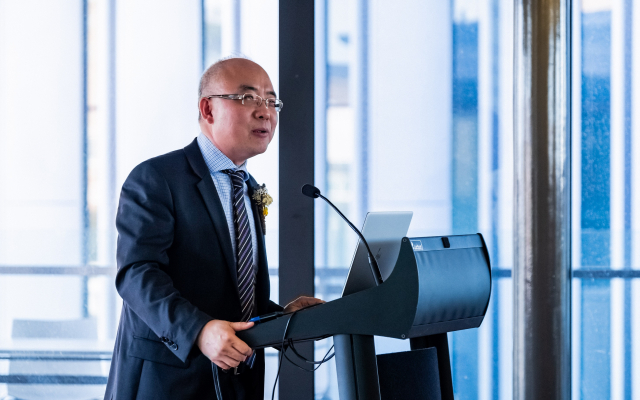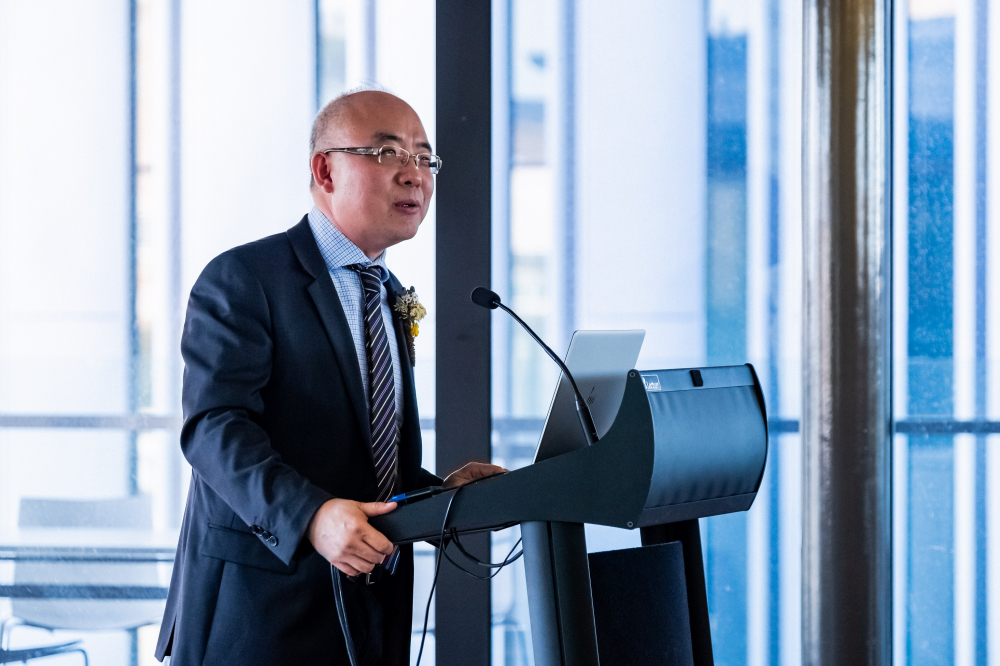
The world is in the throes of an energy transformation, driven by the need to transition from fossil fuels to sustainable energy. Electricity systems of the future will be vastly different from the past, dominated by new technologies and business models, increasingly digital and highly complex. Market design, policy, regulations, legal processes, cyber security, and politics are barely keeping up with advances in technologies, and energy technology choices have multi-generational implications for people and economies. 
The consequences of fragile electricity systems are high: soaring prices, rolling blackouts, security issues and delays to emissions reductions.
The UNSW Digital Grid Futures Institute (DGFI) was created late 2018 with a bold ambition to future-proof global energy systems, to ensure reliable, secure, affordable, sustainable energy supply going forward.
Louise Templeton talks to the director of the UNSW Digital Grid Futures Institute and world-renowned researcher in energy systems, Professor Joe Dong, about how he and a team of researchers plan to ensure Australia is ready for an interconnected, digital grid of the future.
Louise Templeton (LT): Professor Dong, can you tell me what you mean by “future-proofing” global energy systems?
Professor Joe Dong (JD): Traditional power generation is gradually being replaced by renewable energy. The established systems have worked well until now but need to change to ensure the smooth transition to renewable energy sources in future.
We need to look at energy storage, electrifying transportation, physical and cyber infrastructure and socio-economic and regulatory frameworks to prepare Australia for renewable power.
LT: Why is energy storage important?
JD: Traditional, coal-fired power systems have large rotating generators that create inertia, which is a form of energy storage that keeps supply and demand for energy balanced and creates stability when there’s a surge in demand, or a temporary interruption to supply.
Renewable energy sources such as sun and wind use mainly electric power to connect to the power grid and don’t have this inertia, so as we phase out traditional systems, there is less energy stored up in the system to keep the wheels turning, so to speak, or keep the lights on, when there is an interruption to supply.
So, we need to develop energy storage solutions that will smooth the intermittency of renewable energy and guarantee security of supply.
LT: What is the UNSW DFGI doing to develop energy storage solutions for the future?
JD: UNSW has already developed many leading energy storage technologies that will help support system stability as we use more renewable energy in future. We have developed printed batteries, flow batteries, hydrogen fuel cell batteries and lithium-ion batteries. We have also designed integrated solutions that include a combination of batteries, to enable distributed energy storage where it’s needed, whether in homes, commercial buildings, large scale solar or wind farms, or even at major electricity transmission networks like Transgrid.
We are also developing better battery management systems (BMSs) and energy management systems (EMSs) to control the batteries, including how they are drained and charged to maximise battery life and to determine the role of different batteries in various situations. We also must consider arbitrage into the energy market, so all of this extends to economics as well.
LT: Speaking of economics, why are electricity prices always increasing?
JD: This is partly due to government regulation and legal frameworks. Electricity distribution and transmission companies are required by law to guarantee the reliability of power networks at all times. To do this, they must invest heavily into the networks to cater for the worse-case scenario – that one or two days of the year when demand is at its peak. The costs to meet these obligations are passed onto consumers in higher electricity prices.
LT: This seems like a tough one for you to solve, Professor Dong. What can the DGFI do to help in this space?
JD: The DGFI hopes to work with government policy makers, leading industry influencers and partners to try to create some flexibility in power industry regulation, to deliver a system that supports our transition to renewables.
In doing so, we also hope to create regulatory certainty for renewable energy suppliers, so that they can rely on demand forecasts for their products. Without this, we are not encouraging new entrants into the market and thereby slowing our transition from fossil fuels.
Our overall goal in this area is to help build supportive regulatory frameworks to accelerate the energy transition towards a secure, sustainable and affordable energy supply.
LT: What about electric vehicles? Will an increase in demand for electric vehicles bring down the grid?
JD: I hope not. But to address that question, it is crucial to look at the electrification of the overall transportation sector.
The transportation sector is the second largest emissions producer after power. Trains and light rail, for example, already put a huge demand on the power grid. And when electric cars become mainstream, we will need an electricity distribution network that is flexible, so that it will be able to handle huge variations in demand.
LT: What is the DGFI doing to help prepare us for the electrification of transport?
JD: To prepare Australia for these changes, the DGFI is creating cheaper, safer batteries to support electric transportation and mobile energy storage. We are also looking at the best way to get vehicles powering themselves. For example, if we can coat vehicles with photovoltaic film, we should be able to use the sunlight to power the air-conditioning and electronics and conserve battery power.
And then the last, a very important part of our work involves how the entire system is held together. The Institute will work on breaking down the silos between energy and transport to make one, integrated system.
LT: Tell me more about how you plan to integrate the entire system
JD: This is the essence of the DGFI. Every component of this “system” - including wind and solar farms, power plants, homes and offices, transportation, home appliances and utility communications – is part of the digital grid of the future. Almost everything imaginable will have its own IP address and be discoverable on the internet. Many of these things are already automatically monitored and controlled remotely and this will increase significantly in the next 5 to 10 years.
Everything is far more interconnected than ever, and security no longer only means individuals and businesses looking into their own physical assets, but it’s how the overall system is secured. There are cyber, physical and societal/ human risks involved – even our payment systems rely on the web, so there are risks to our financial systems as well. Monitoring these risks will rely on the Internet of Things and next generation telecommunication solutions like 5G, and will require robust engineering to ensure that risks are mitigated.
The DGFI will be looking at how we can build a future energy system with resilient physical interconnections, and design open, yet secure, cyber systems across the grid for intelligent energy monitoring. This will enable a high penetration of intermittent and renewable energy and distributed energy resources, and also manage disaster risk.
The DGFI has also already made remarkable progress in the six months it’s been operational. It is involved in several projects to pilot its research, including large solar farms, a smart city trial and helping an indigenous community reduce their power bills through renewables. Many other projects and collaborations are underway.
The Institute has distributed almost $1 million in interdisciplinary research across faculties at UNSW to address many of the topics that Professor Dong discussed today. Collaborating faculties include Engineering, Science, Business, Arts & Social Sciences and Law.
It plans to hold regular events with industry to discuss and report on its major research initiatives and progress.
The Institute is lead by Professor Joe Dong and a management board that includes senior leaders from AGL, Ernst & Young, Alinta Energy, and CSIRO.
Follow the Institute’s journey here.
